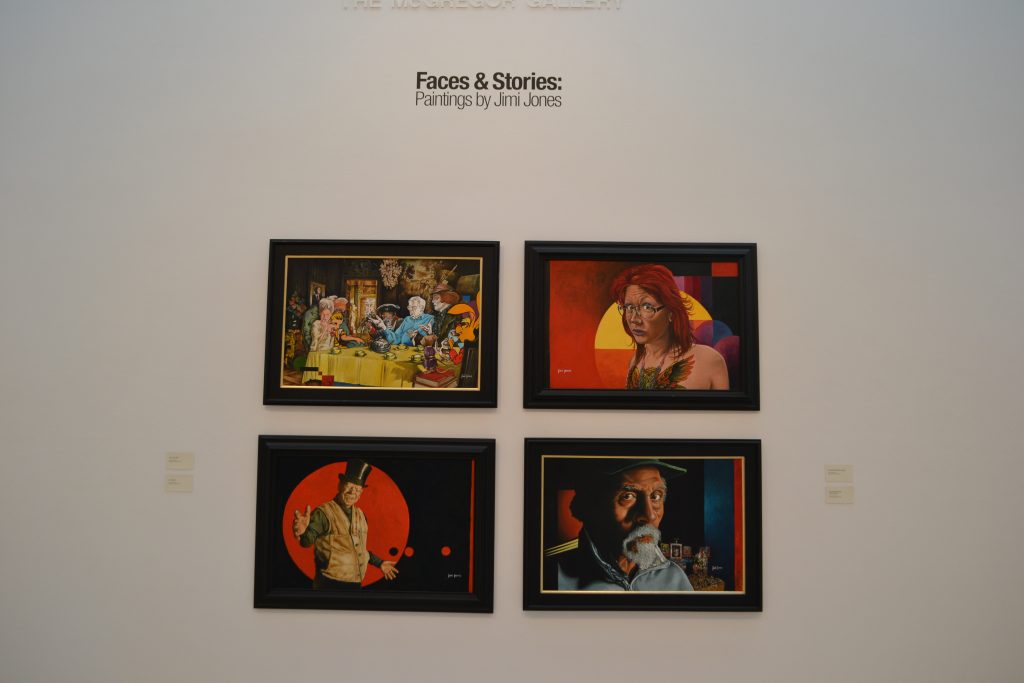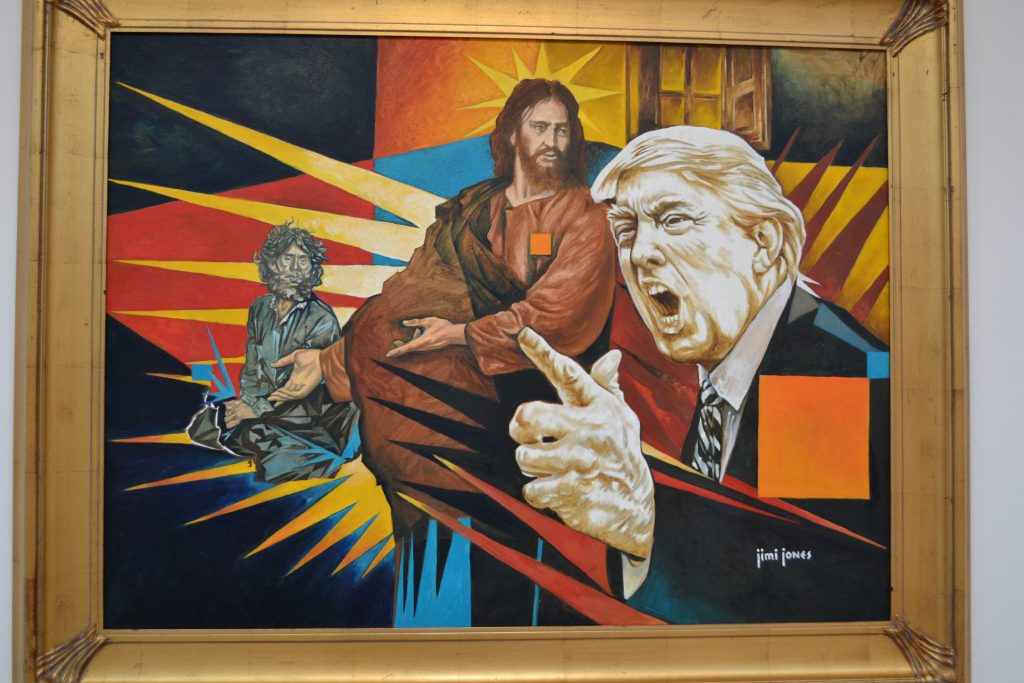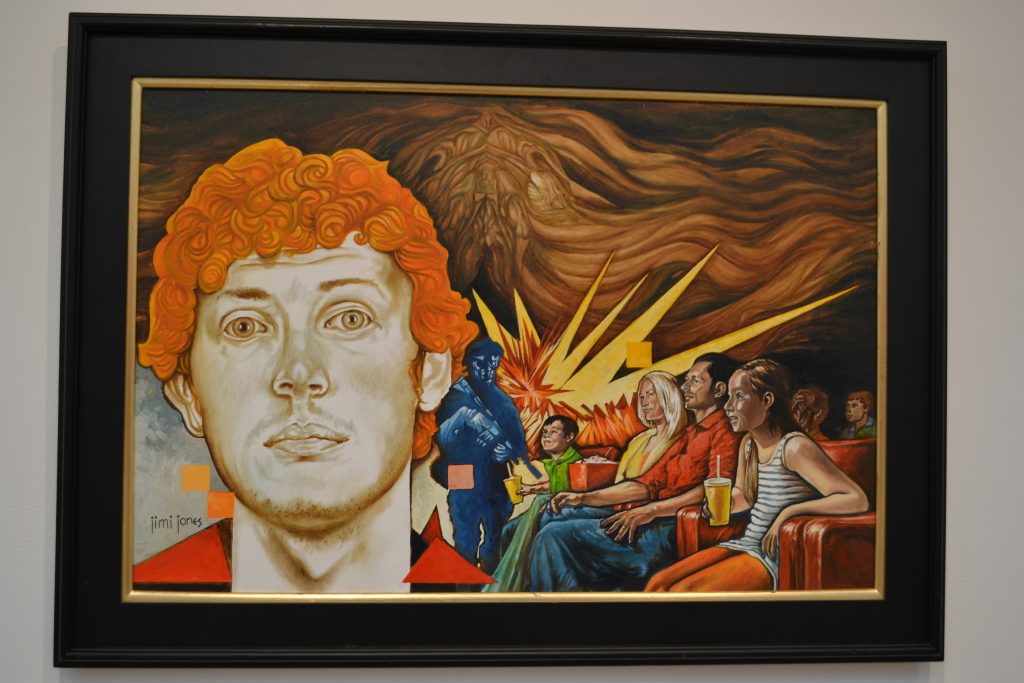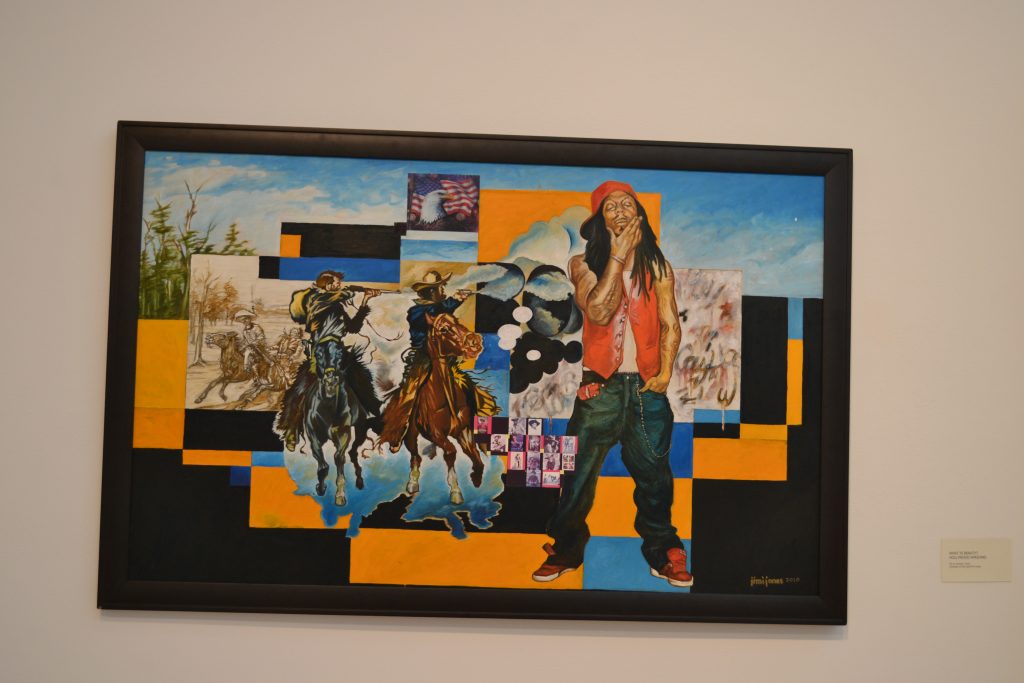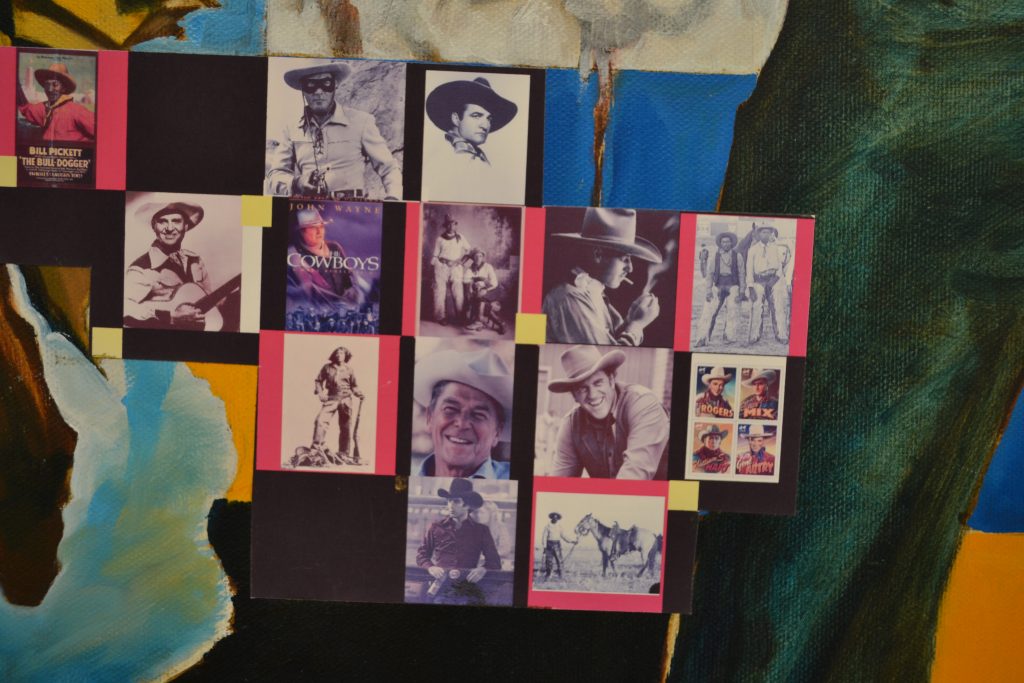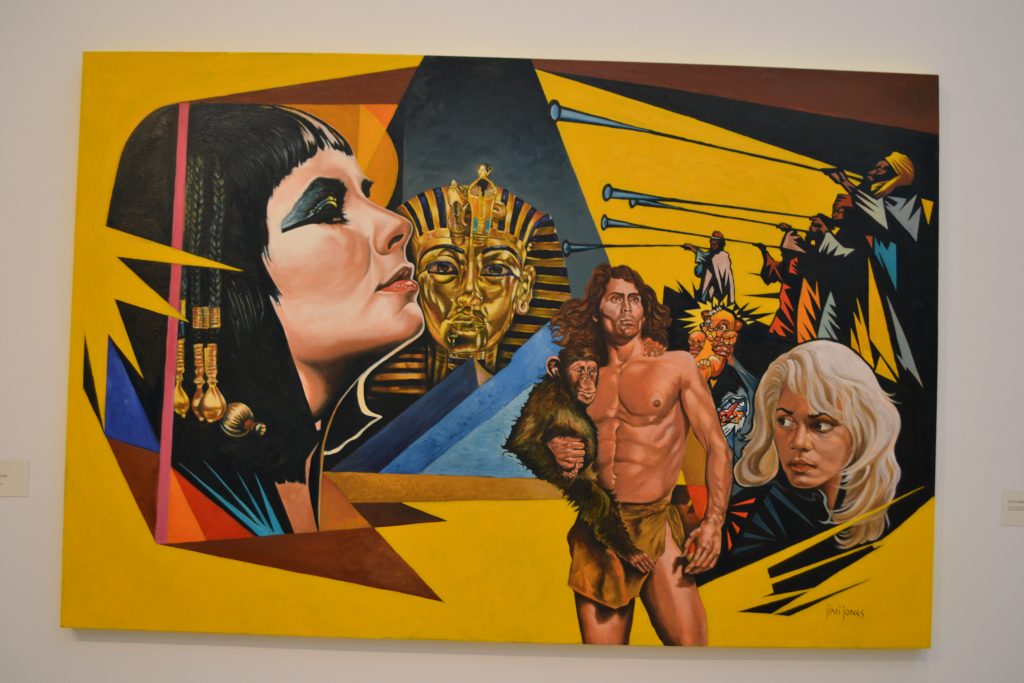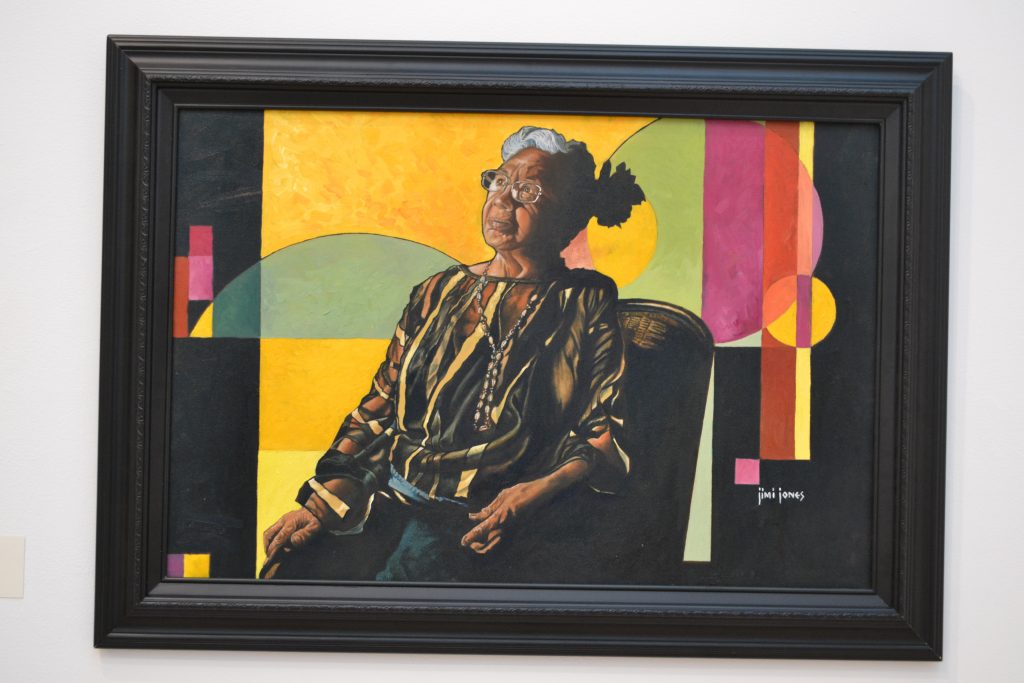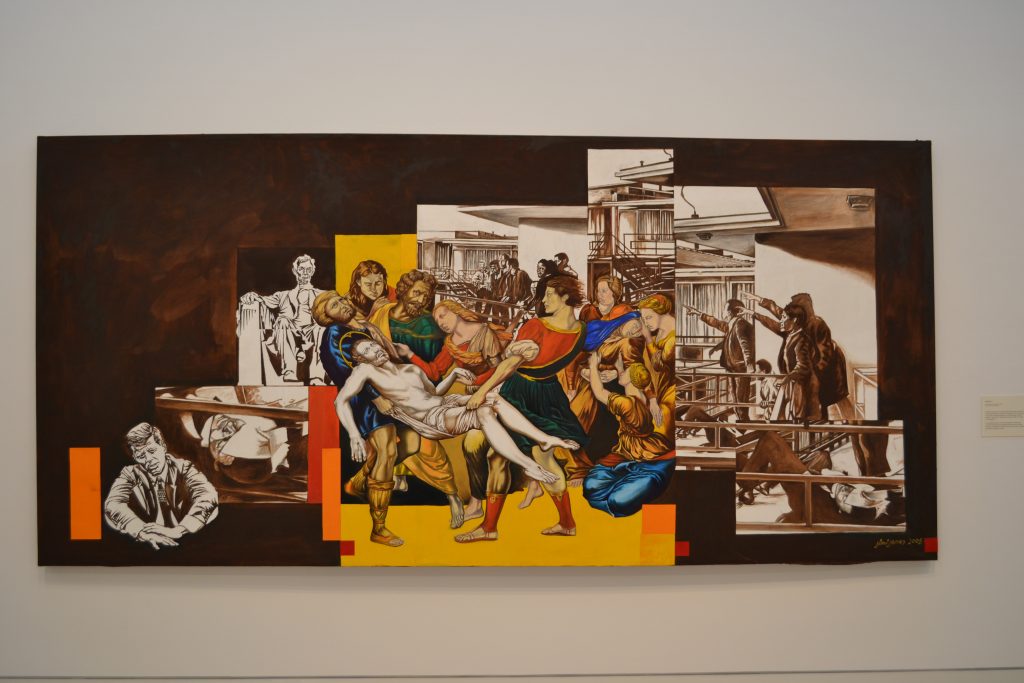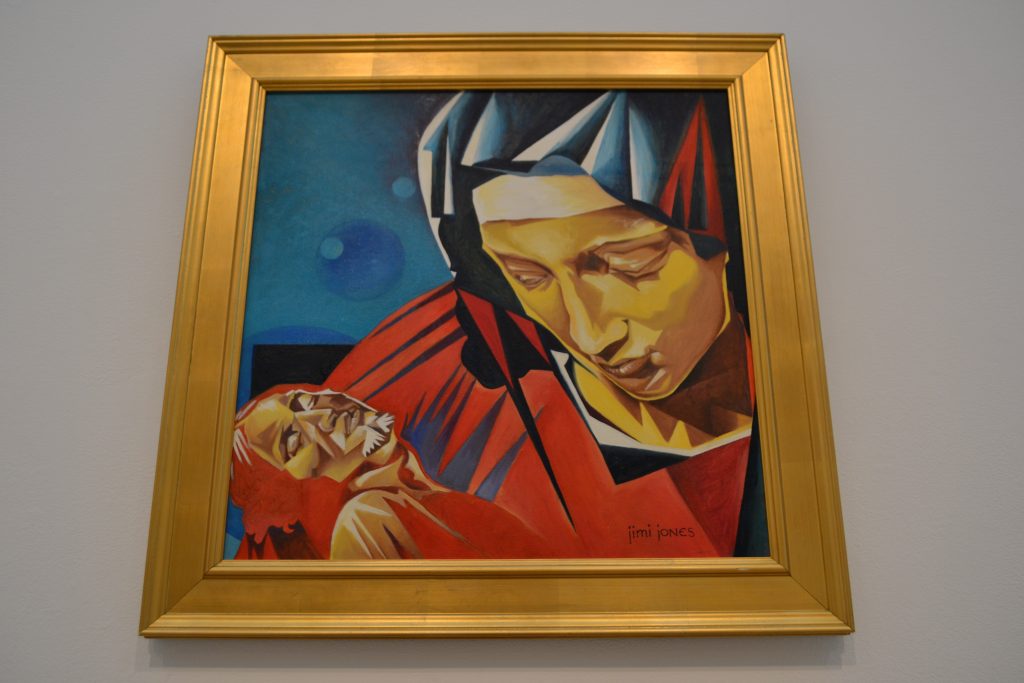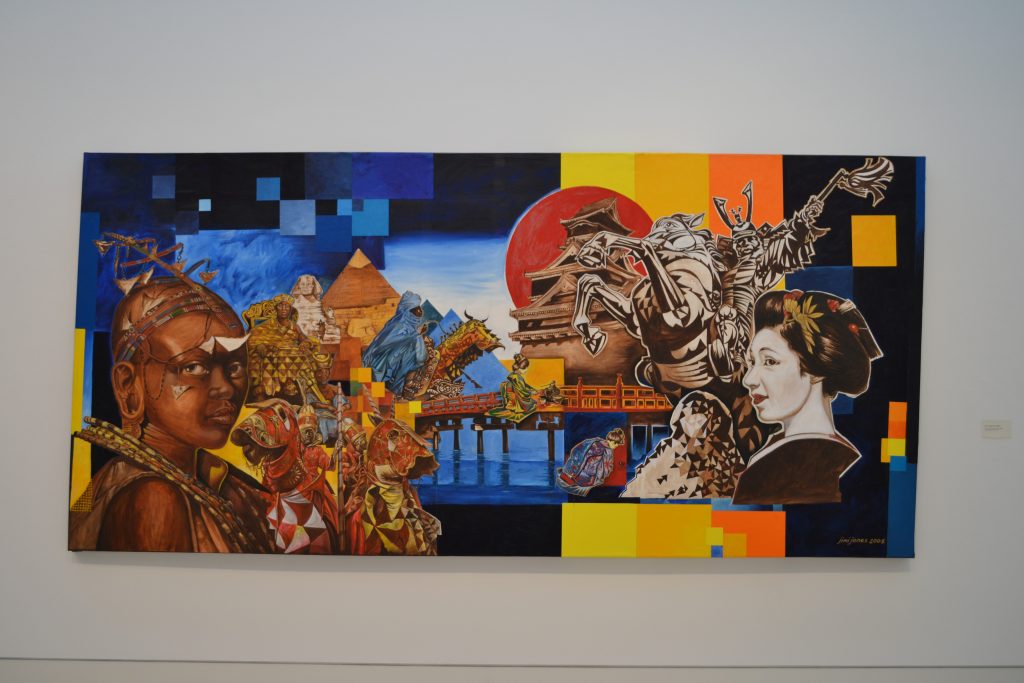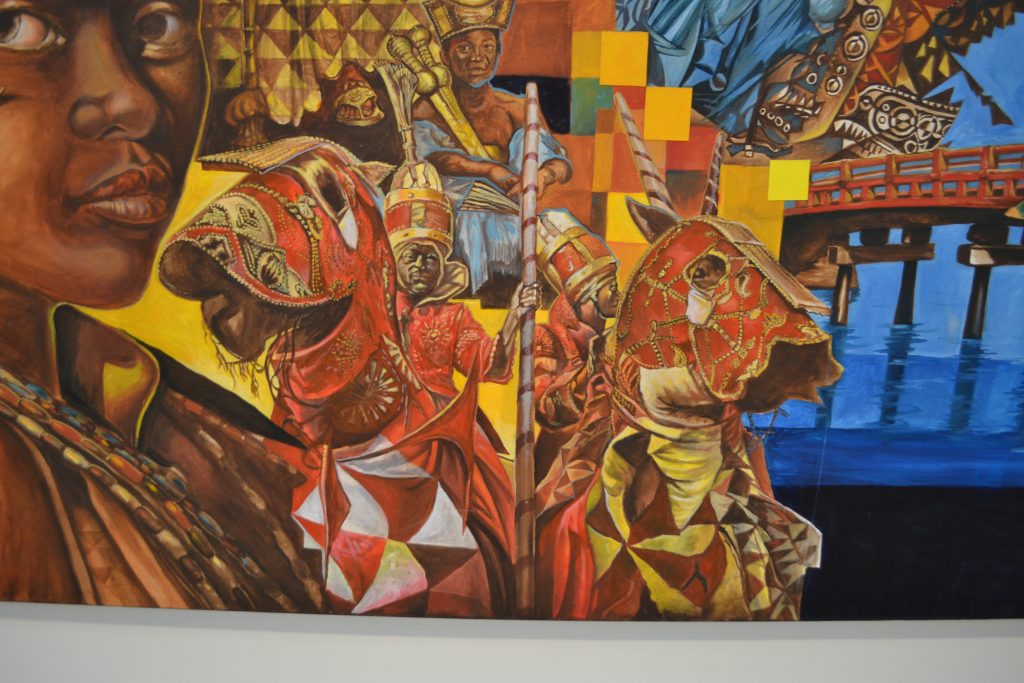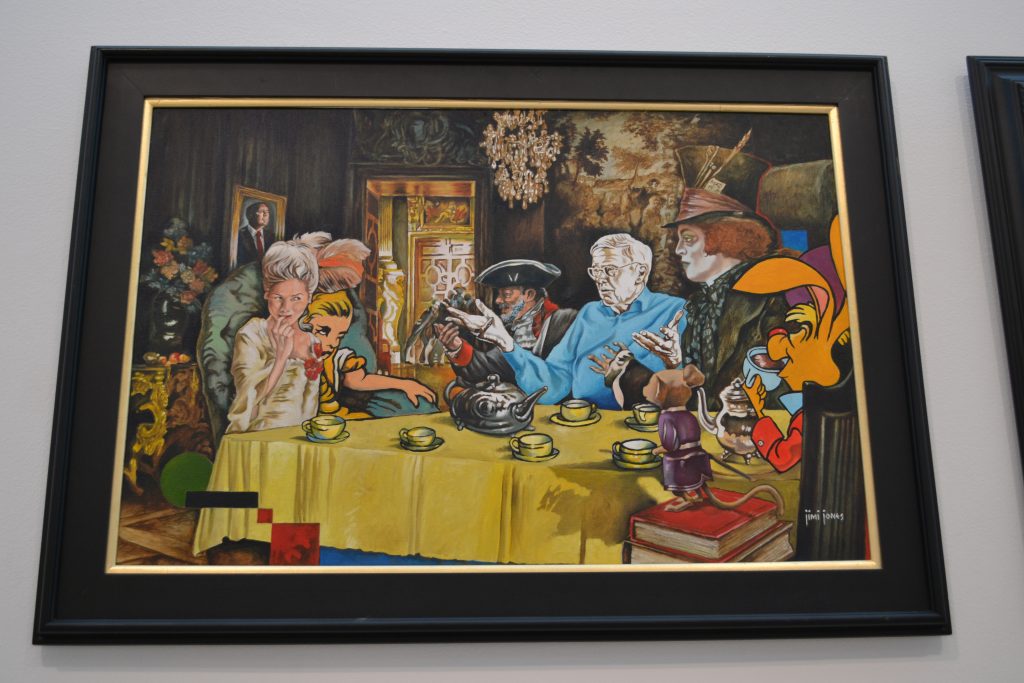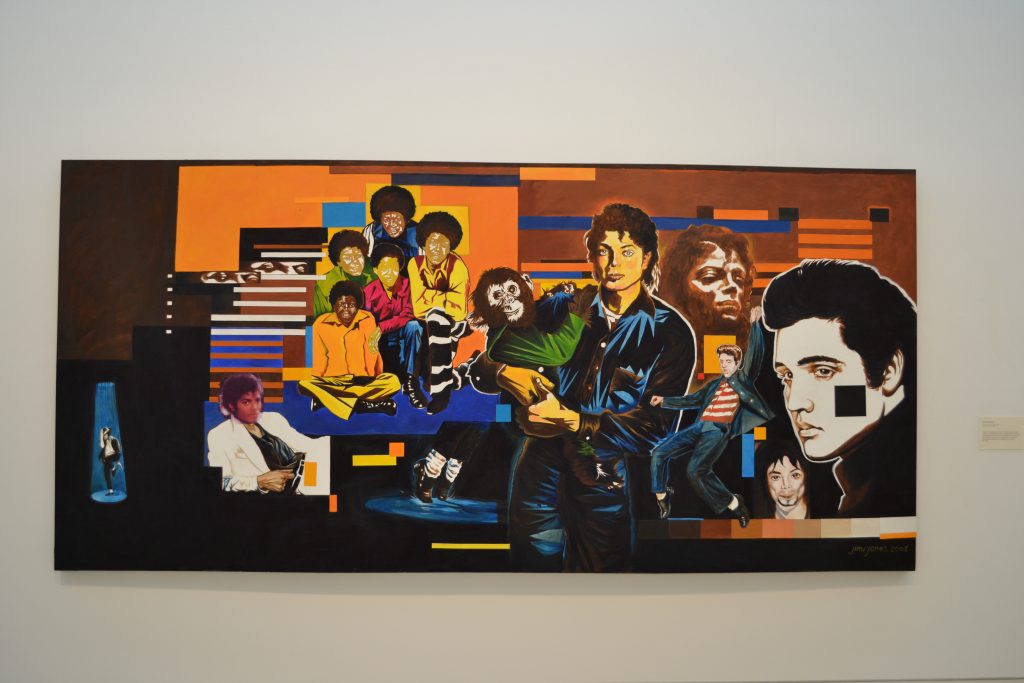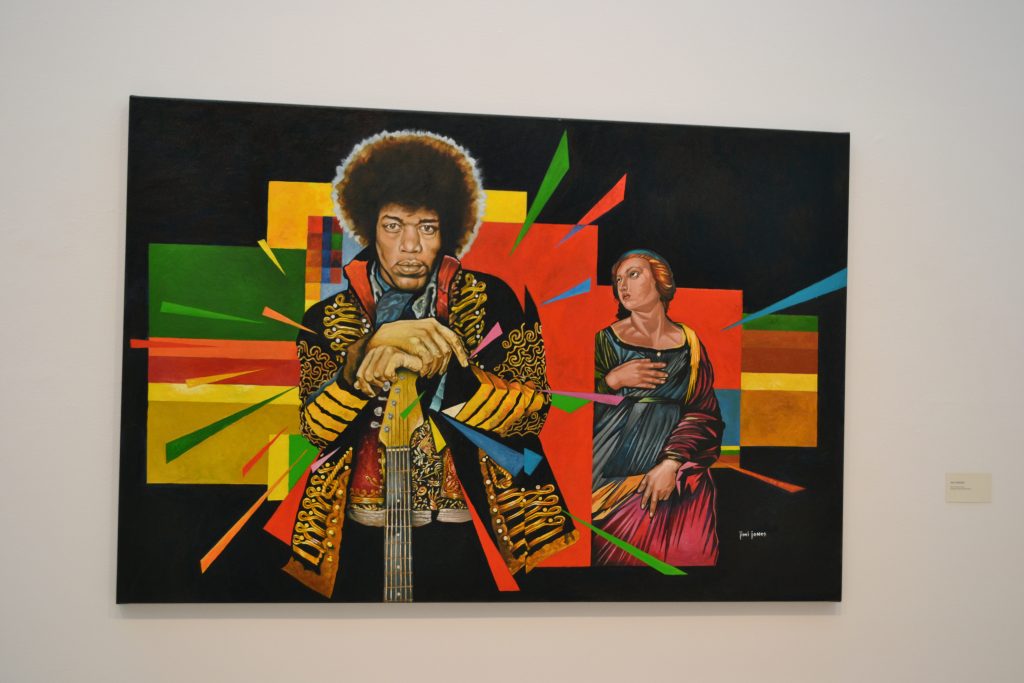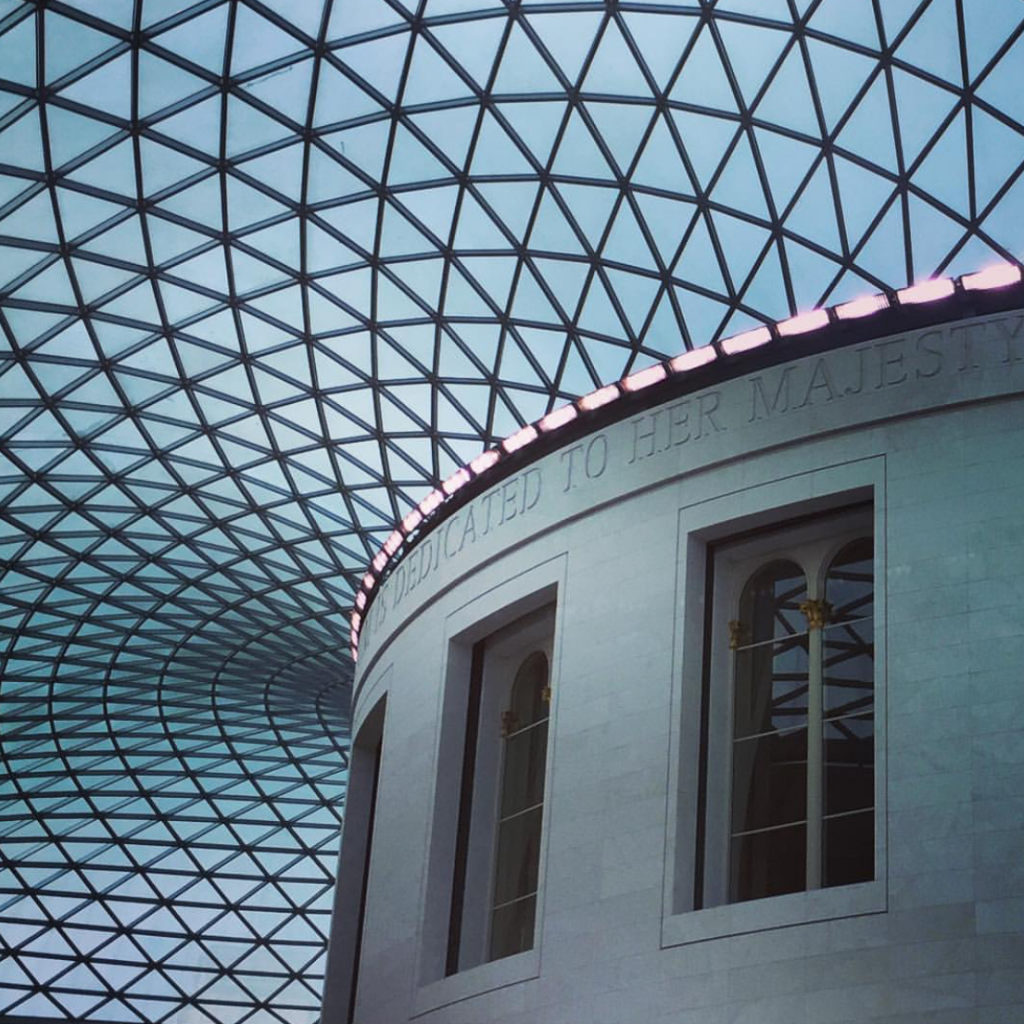
I was overwhelmed with excitement as I entered each of the rooms at the British Museum. I have never before seen so much history represented in one place. Unprepared for the amazing relics and archaeological objects spanning thousands of years, I was excited for the opportunity to glimpse into the lives and cultures of so many ancient civilizations. Established in 1753, the British Museum is the oldest public museum in the world and in my opinion, one of the most fascinating.
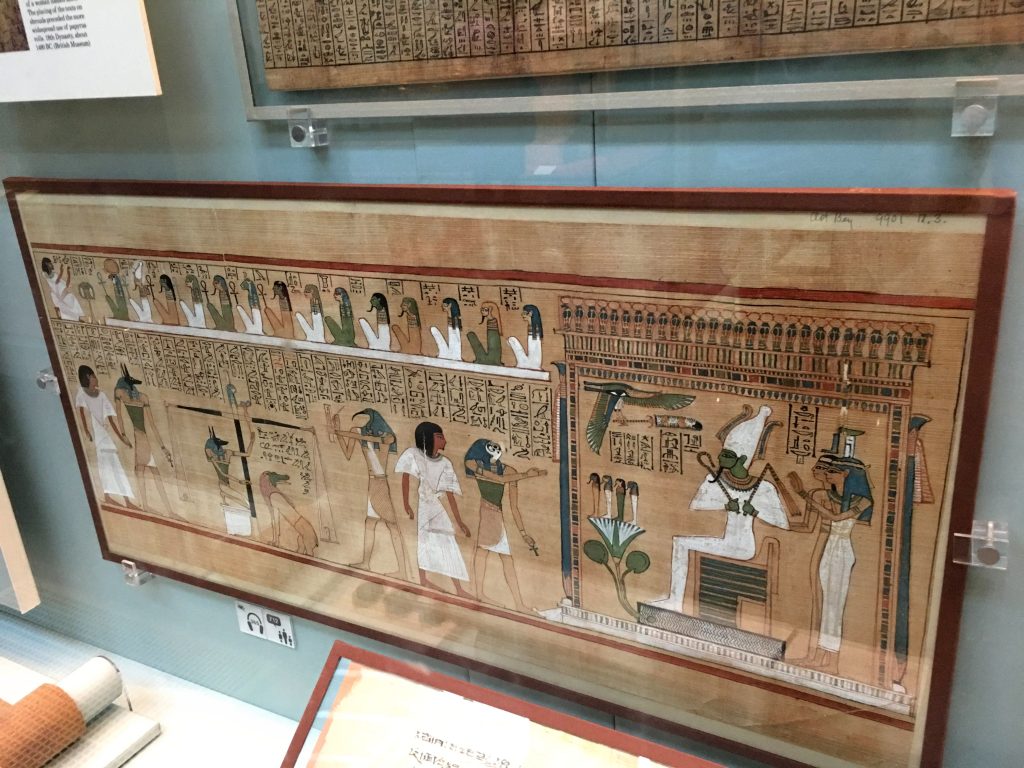
Credited as the first “archeologist”, Roman Queen Helena’s pilgrimage to the Holy Land in the 4th century AD was focused on preserving the sites and relics relating to biblical accounts of the life of Jesus Christ. It was her desire to protect the Christian items and locations so that others could visit them in the future.
Today, museums such as the British Museum, house spectacular finds through archaeological digs and private collections that span thousands, even millions of years. Covering the rise and fall of some of the most powerful civilizations such as Egypt, Assyria, Greece and Rome, these insights explain their religious, political and societal beliefs. From artwork to architecture and skeletons to sarcophagus, visitors have the ability to understand how these societies evolved over many generations.
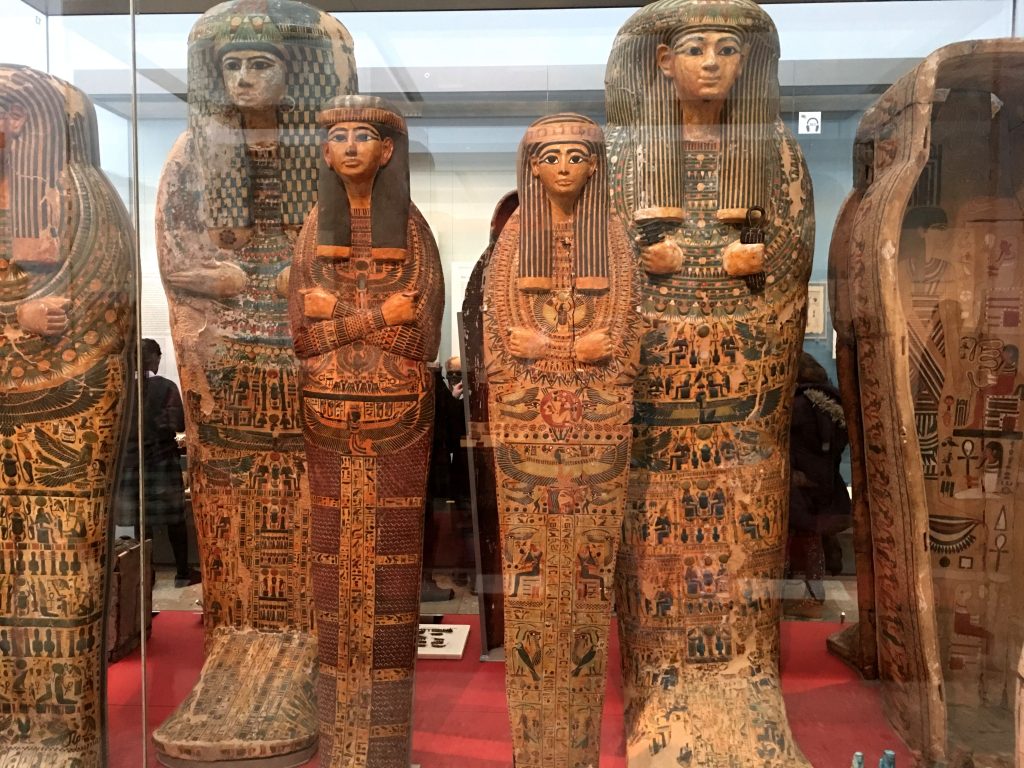
Ancient Egypt:
The mummies are one of the most popular exhibits among visitors and are located in rooms 61 – 66 upstairs. On display are some of the various instruments used by embalmers to preserve the bodies before they were entombed. This floor also houses Coptic art, fancy jewelry and one of my favorite statues, the bronze cat with the gold nose ring.
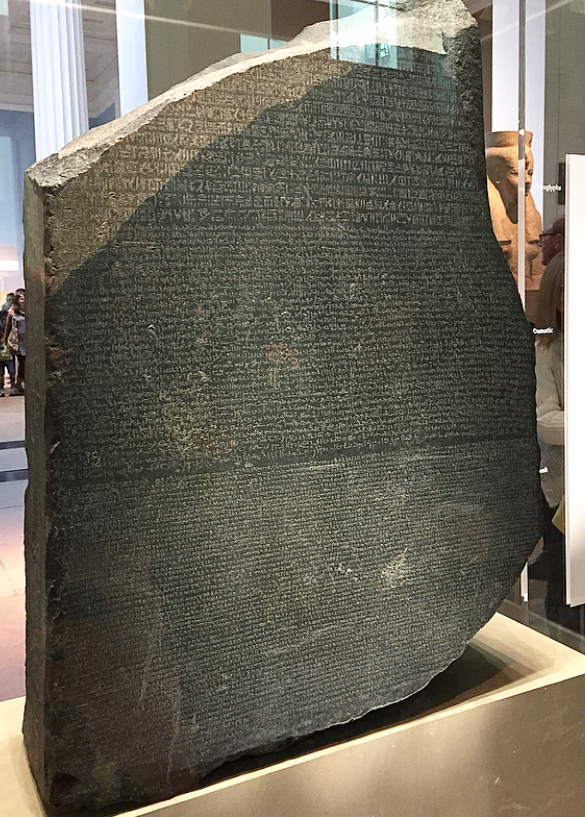
Entering through the main entrance and arriving into the Grand Court, the Egyptian Exhibit is located to the left of the Reading Room in Room 3. Displays of large, colossal statues and Egyptian sculptures dominate the space dating from 3000 BC. One of the most historically significant finds in all of ancient history is the Rosetta Stone.
One of the most visited objects in the British Museum, along with the mummies, is the Rosetta Stone. Unearthed in the Egyptian desert in 1799, the Stone was used by Francois Champollion, a French scholar, to decipher Egyptian hieroglyphics. This black slab of rock included three inscriptions in three different languages (Classical Greek and the two forms of ancient Egyptian) which assisted in the decoding of the Egyptian pictographs. Their biggest breakthrough was when it was discovered that the name of ruler Ptolemy V appeared on the sixth line of the stone. The Rosetta Stone dates back to 196 BC, made in honor of the coronation of Ptolemy. Large stones, such as this one, would have been displayed in temples all across Egypt and there are another seventeen quite similar that have since been discovered.
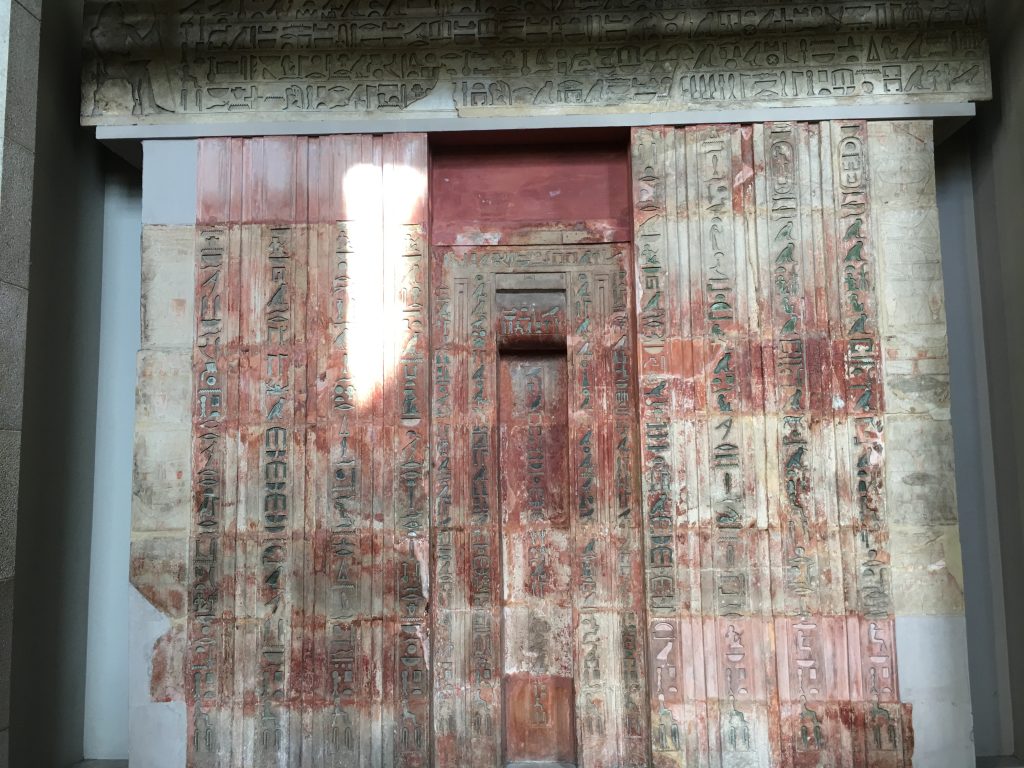
Not far from the Rosetta Stone (about 20 steps), is the Limestone False Door and Architrave of Ptahshepses dating back to 2400 BC. The door as well as the lintel are inscribed with hieroglyphics which tell the life story of a man named Ptahshepses. False doors were similar to our grave markings today, yet they were used as a ceremonial entrance into the room in which the mummified deceased was buried with his belongings. The purpose of the door was to allow the soul to come and go as it pleased but also used to keep out grave robbers from removing the earthly possessions of the dead.
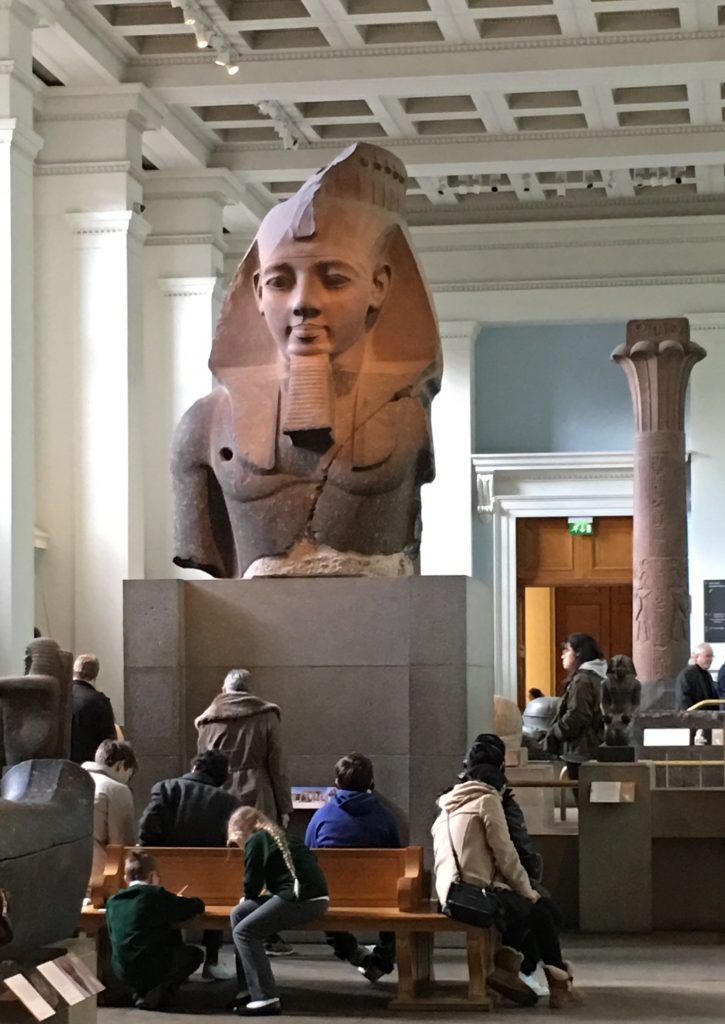
Towering over the Ancient Egypt complex on the main floor, I easily spotted the Colossal Statue of Ramesses II in the distance. Ramesses took the throne in 1279 BC and reigned for 66 years. Known for his building accomplishments erecting temples, tombs, palaces and a large number of statues of himself, it is debated that he may have been the King of Egypt during the Exodus of Moses.
Weighing in at twenty tons, the full size sculpture stood 8 – 9 feet high. It was the largest Egyptian sculptures the British had ever seen and only the upper half of Ramesses statue is displayed at the British Museum. The statue dates back to approximately 1250 BC and was found in the Ramesseum, the pharaoh’s mortuary temple in Thebes. This memorial complex was built so that Ramesses could be worshiped as a god for many years after his death.
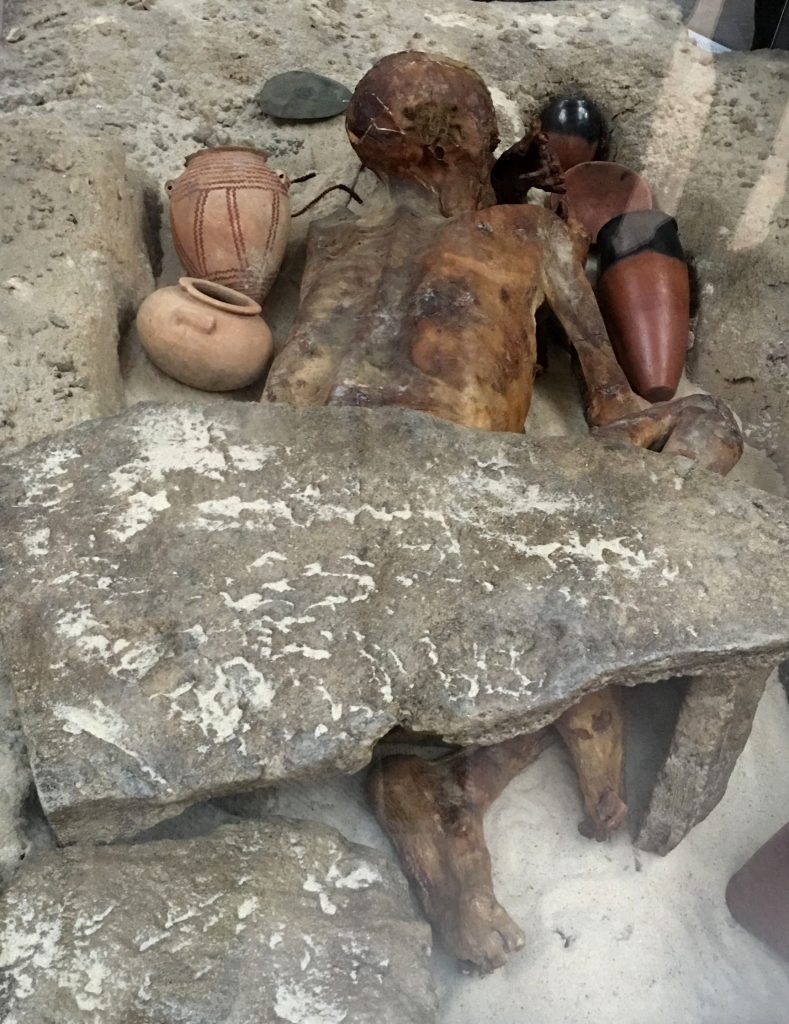
Exiting the Egyptian Room through the door facing the back of the Ramesses statue, there is a set of stairs that leads up to the mummies, coffins and one of the most fascinating displays I had ever seen, the human remains of the Gebelein Man (nicknamed Ginger due to a tuft of reddish hair) a naturally preserved body.
The body was discovered in 1856 in the desert of Egypt in a grave covered by stones. A combination of elements contributed to the preservation of the human tissue to include the hot sand naturally dehydrating and protecting the body and the additional layer of grave stones may have kept animals away. Scientists estimate Ginger to have died 5400 years ago, long before the pyramids were erected. He was found buried with bowls, beads and a flint blade next to his arm.
New technology has brought additional information to light about the death of Ginger. With digital imagery, it was determined that Ginger was “certainly murdered” and “his injuries suggest he was the victim of a deliberate, violent killing….consistent with a stab wound”. Additional information states that he was between the ages of 18 and 21 and was “stabbed by a blade of copper or flint at least five inches long.”
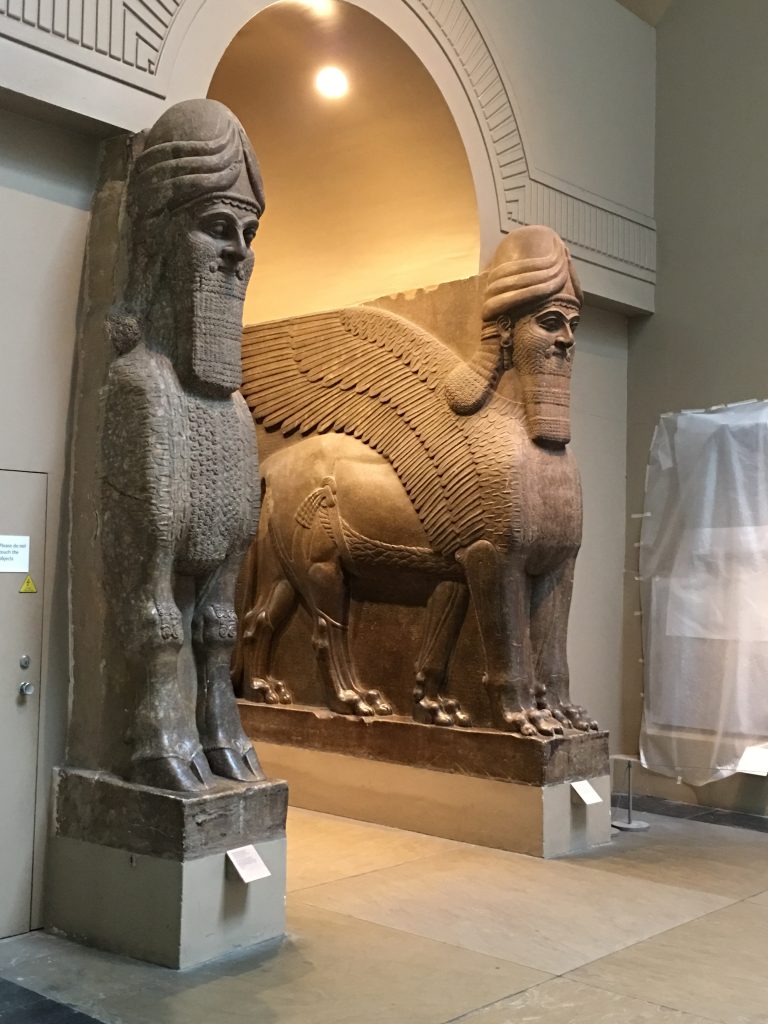
Ancient Assyria
Assyria, known today as modern-day Iraq, was a power-house civilization of the Middle East. Making their way as conquerors and traders, this Semitic culture expanded their dominion in a fierce ruthless manner terrorizing their neighbors from 900 – 600 BC. Some of the most beautiful artwork comes from the Assyrians on display at the British Museum.
Backtracking back to the Rosetta Stone in the Egyptian Gallery in Room 6, there are Two Winged Lions with Human Heads dating back to 870 BC. Found guarding the Assyrian palace of Ashurnasirpal II at Nimrud was called the Lamassu, the god of protection which defended the king from evil spirits. What makes this statue interesting is that it has 5 legs. The small marks between the loins of the Lamassu is cuneiform writing.
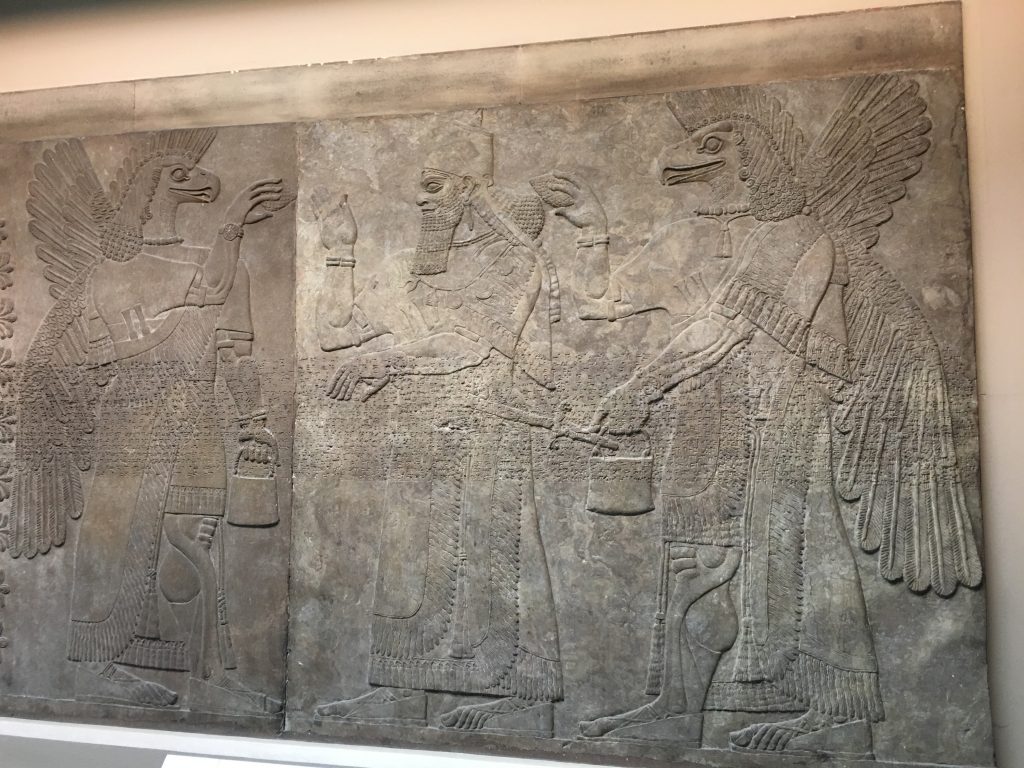
Passing through the Two Winged Lion entrance, turn right into Room 7, a narrow red hallway leading into a room with brown stoned panels. The beautifully detailed reliefs would have been painted and varnished, displayed in the throne room of Ashurnasirpal II’s palace. These intricately carved panels tell the story of Ashurnasirpal’s victories and hail him as the greatest king of the world.
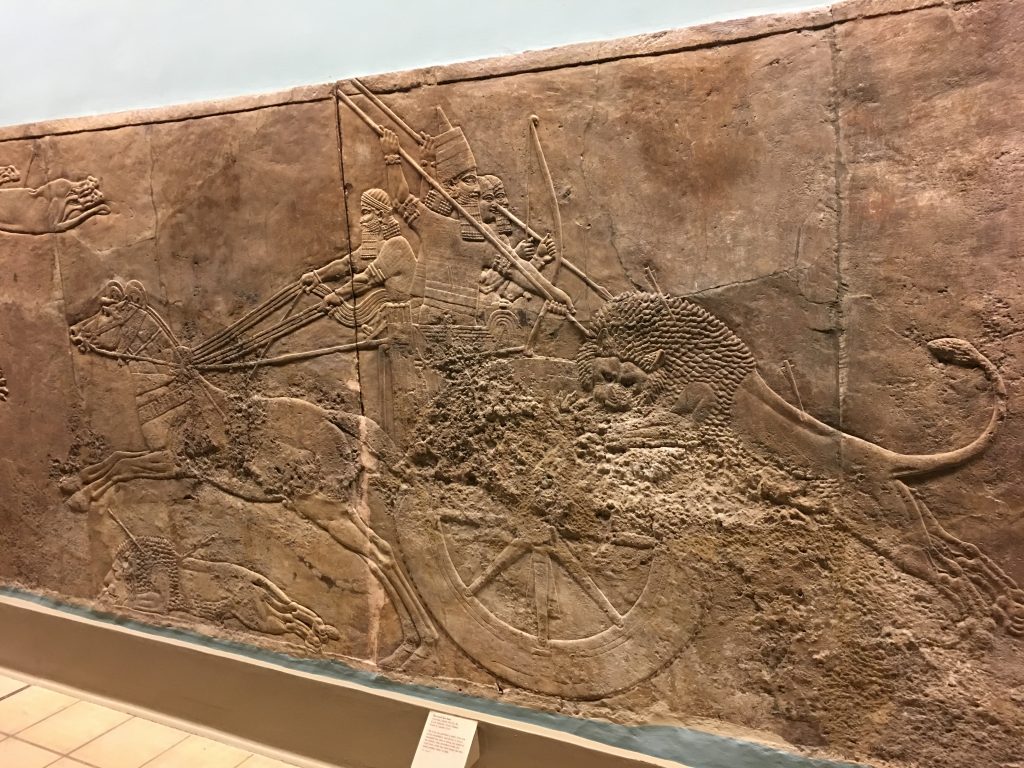
Known to be ruthless in battle, the Assyrians carried their brutality into their leisurely activities as depicted in a set of reliefs in Room 10 labeled the Royal Lion Hunt. The impressive artwork depicts the horses and dogs preparing for the hunt while lions await unknowingly until the lions are killed by arrows. Lion hunts were the sport of kings and when wild lions were not available, staged hunts were arranged with animals bred for the fight. One of the reliefs shows King Ashurbanipal riding in a chariot participating in the hunt. Soon after the king’s death, the civilization of Assyria is overthrown by the Babylonians in 613 BC.
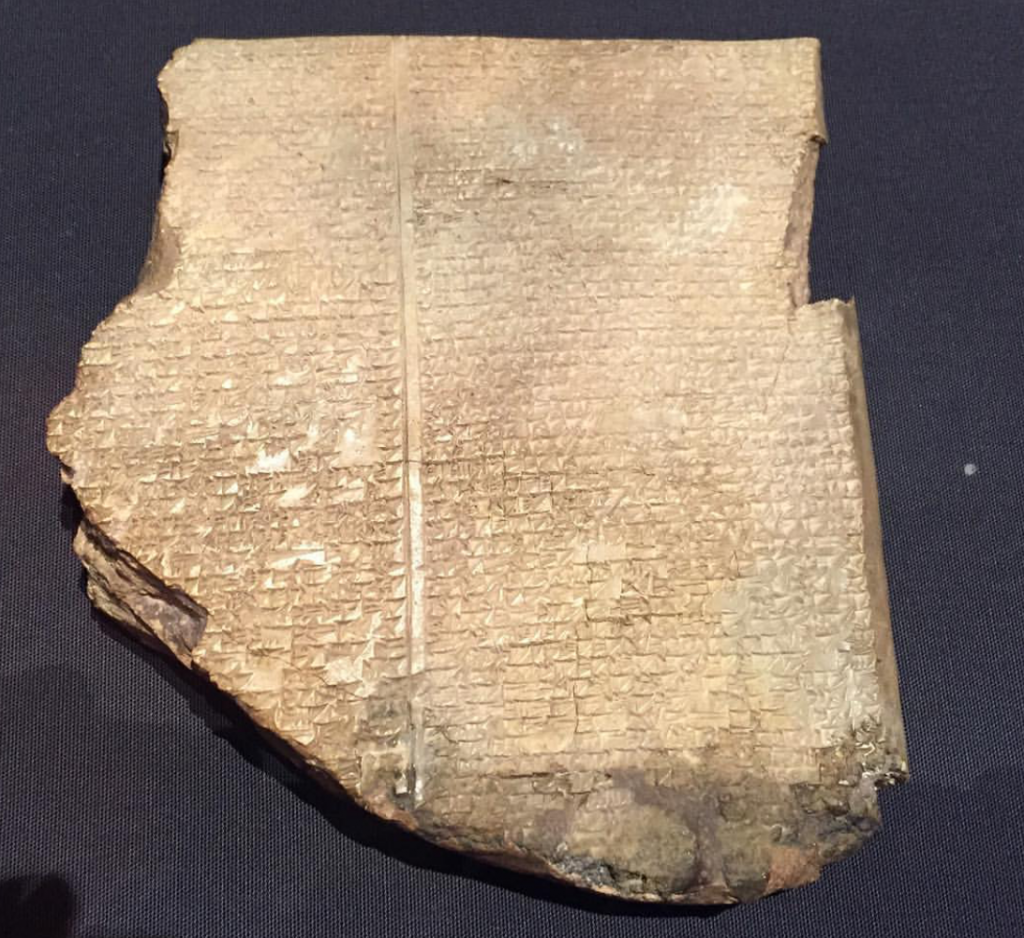
In Room 55, an extraordinary artifact is on display. Dating between 1500 – 500 BC it is identified as the “Flood Tablet”, which was found in King Ashurbanipal’s library. While many people are familiar with the story of Noah and the Great Flood, according to this writing, a similar story to the biblical account is referred to as the “Epic of Gilgamesh”. The gods planned to destroy the world with a flood, so Ut-napshti built a large boat to save his family and every type of animal. Of course the finding of this documentation in the late 1800’s caused quite a scandal due to the similarity between the Gilgamesh and Noah accounts.
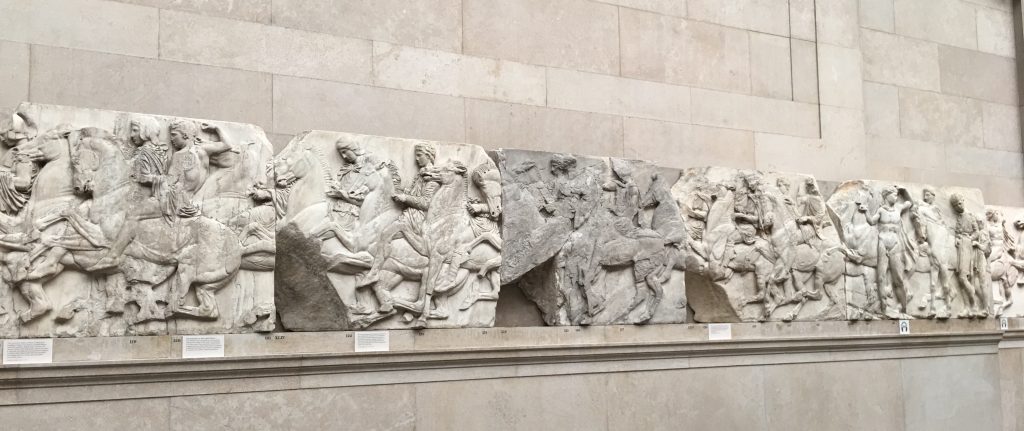
Ancient Greece:
Visiting Greece last summer, a trip to the Acropolis was one of the highlights of my travels. I remember standing at the bottom stair leading up towards the Propylaea. This Panathenaic Way led to the Parthenon, the temple dedicated to Athena, the goddess of wisdom and victory. Inside, there once stood a colossal statue of her likeness made of gold and ivory, while the exterior was just as extravagant, with columns and colorful relief carvings.
Today, the ninety-two reliefs, known as the Elgin Marbles, are on display at the British Museum. These metopes, carved out of stone, depict war and battle scenes in elaborate detail. Some of them represent mythological conflict, while others portray actual battles. While many visitors stroll the exhibit to view the fifth century artwork, many are also intrigued by the political controversy that surrounds the display…should these ancient artifacts stay in London or should they be returned to Greece?
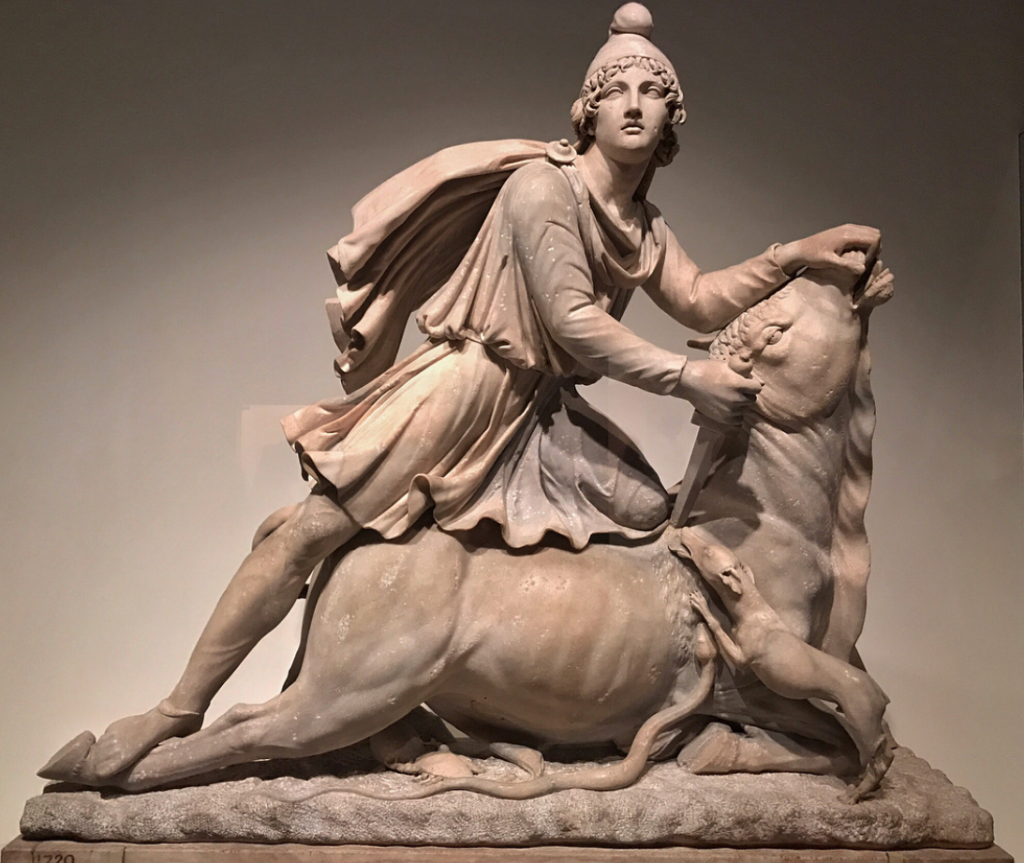
Ancient Rome:
The Romans embraced many gods from various cultures and celebrated an assortment of beliefs. From Persia, they adopted the worship of Mithras, or Mithraism which involved a number of initiations and rituals. The Mysteries of Mithras lasted in Rome between the first and fourth centuries so there is limited knowledge about the religion. It was so secretive that there were underground temples. What remains of this faith are several marble sculptures portraying the god Mithras, including the Statue of Mithras on display at the British Museum.
Dating somewhere around the 2nd century, the beautifully carved stone shows Mithras performing the ritual slaughtering of a bull. Wearing a Phyrgian cap and trousers, his attire depicts the fashion of the east. The bull’s blood was said to have had cleansing properties, which would explain the dog and snake licking the blood, while the scorpion is shown attacking the bull’s testicles.
The detail of this sculpture, the flowing skirt and cape, and the folds in the shirt are exquisite. The sculptor is unknown, but it is one of the most fascinating pieces of Roman art in the museum.
The British Museum collection includes additional artifacts from other cultures around the world. For example, the North American Otter Pipe, found in Ohio dates back to 200 BC – AD 100 or the Shang bronzes from 15=00 BC. There are modern plaques from Africa, Mayan statues, and the Lewis Chessman found on an Isle in Scotland. Even the Great Court and Reading Room are both impressive and historical.
Have you had the opportunity to visit the British Museum? What was your most fascinating memory of your visit? I would love to hear about your experience if you would kindly leave a message in the comments section below. Want to know where to go, eat and stay in London? Check out more of my recommendations below for a magical experience in London! Many thanks for exploring the British Museum through my post and wishing you many Happy Travels!
What to See and What to Do:
The British Museum
Great Russell Street
Bloomsbury, London WC1B 3DG, UK
Telephone: +44 20 7323 8000
- Admission Fee: There is no fee for visiting the British Museum
- Hours: Open daily from 10AM to 5:30PM and open until 8:30PM on Fridays
- Amenities: scheduled tours, audio guides are provided in 10 languages, special exhibitions, restaurant, cafes, shops
- Scenic View: Photograph the glass ceiling of the round reading room designed by Sidney Smirke
- Length of Visit: At least 2 – 3 hours to see the highlights
- Tips for Your Visit: Wear comfortable shoes for walking, pick up a map of the venue for planning your visit.
Where to Stay:
The Montague on the Gardens
15 Montague Street
London WC1B 5BJ, UK
Telephone: +44 20 7637 1001
Where to Eat:
Afternoon Tea at The Montague on the Gardens
15 Montague Street
London WC1B 5BJ, UK
Telephone: +44 20 7612 8416
On my first visit, I happened upon the Safari Themed afternoon tea which included an African-themed menu. I enjoyed a selection of finger sandwiches of African-spiced chicken and apricot, scones baked fresh with Devonshire clotted creme, a giraffe macaron with toasted coconut mouse, banana meringue and a wide variety of teas to include traditional, flavored, aromatic, fruit and green teas. I couldn’t pass up the Leopard Cocktail made with Amarula cream liquor, decorated with leopard spots and a paw print.
On Sunday, I returned for the Free Flowing Champagne garnished with fresh strawberries. From 2 to 6, I could enjoy as much champagne as my heart desired along with a wonderful selection of scones, pastries, sandwiches and cakes.
What to Eat:
- Afternoon Tea at Fortnum & Mason’s Diamond Jubilee Tea Salon in Piccadilly
- Bangers and Mash at Mother Mash in Soho
- Beef Welington at Simpsons on the Strand
- Cockles, a type of clam, are best tried at Borough Market
- Crumpets, similar to English Muffins should be ordered at Ask for Janice in Farringdon
- Eton Mess is an amazing British dessert made of crushed meringue, cream ans strawberries at the National Cafe at the National Gallery
- Fish & Chips at Poppies Camden in London
- Full English Breakfast, which also includes blood pudding (a blood sausage) at The Ivy
- Pie and Mash at the Windmill Mayfair
- Pimm’s Cup, a gin-based drink made with ginger ale or lemon lime soda, fruit and mint is the official drink of Wimbledon and is best ordered at Lido Cafe Bar in Hyde Park
- Scones at Gail’s Bakery
- Scotch Egg is a dish that includes a hard boiled egg wrpeed in sausage meet, breaded and then fried; Try this at Fortnum & Mason’s Diamond Jubilee Tea Salon in Piccadilly
- Shepard’s Pie is on the menu at The Ivy Restaurant
- Sticky Toffee Pudding at the Queens Arms in Kensington
- Sunday Roast with Yorkshire Pudding in Nottinghill at The Windsor Castle
- Toad in the Hole, a pastry filled with sausage at Bistro Union
- Victoria Sponge is a vanilla sponge cake filled with jam and whipped cream at the Wallace Collection Museum
What to Read:
- A Parcel for Anna Browne by Miranda Dickinson
- A Week in December by Sebastian Faulks
- Absolute Beginners by Colin MacInnes
- Act Like It by Lucy Parker
- Bridget Jones’s Diary by Helen Fielding
- London: The Novel by Edward Rutherford
- My Best Friend’s Girl by Dorothy Kroomson
- Oliver Twist, by Charles Dickens
- The Adventures of Sherlock Holmes by Arthur Conan Doyle
Photo Guide to London:
- The Lobby of the British Museum
- Covent Garden Market
- St. Paul Cathedral from the Restaurant Madison at One New Change, Millenium Bridge or Paternoster Square
- Summerset House, especially during the Christmas holiday
- The houses of Notting Hill
- The architecture of Pancras Renaissance Hotel
- Saturday market at Portobello
- For amazing views, photos from the Coppa Club, close to Tower Bridge
- The lovely pink cafe in London, Peggy Porschen
- Panorama of London from Sky Garden Rooftop
- Street art in Shoreditch
- Leadenhall Market looks like Harry Potter’s Diagon Alley
- South Bank for photos of the Thames
- Panoramic Views of London from the London Eye
- Saint Aymes Cafe for lovely feminine photos
